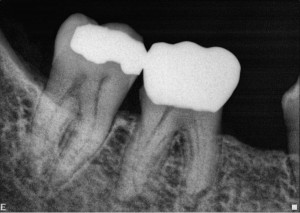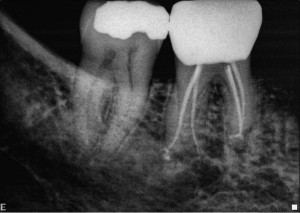One of the most common anatomical anomalies we see in lower first molars is the presence of the radix entomolaris. This is a configuration where instead of the usual two anatomical roots, there are three, with a separate distolingual root. Often this root can be identified preoperatively from the use of shift radiographs.
Clinically, this root often exhibits significant buccal curvature in the apical third. It also frequently has an abrupt angle of exit from the pulp chamber. Because of these attributes, it is easily ledged or blocked. File separation is also a significant risk in this case type.
The key is identifying this case type early. In my experience, once the borders of the pulp chamber have been defined, an asymmetric chamber with two distal orifices, one orifice offset to the lingual from the midline, is strongly suggestive of a canal in a separate root. Working radiographs(using the SLOB rule) are helpful, as is a commitment to conservative shaping early in the procedure.
The multiplanar curves characteristic of radices limit the size of the instruments that can be used early in the procedure. These are usually cases where I carefully assess what the tooth is giving me and I go from there. You don’t want to try to force a large file apically with pressure in this case type. It will not go the way you would like.
The case below is diagnosed as follows:
Necrotic pulp, symptomatic apical periodontitis #30.

